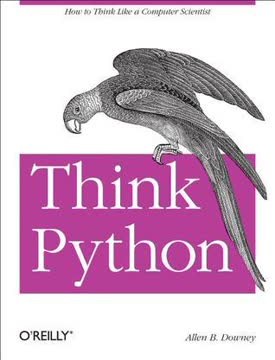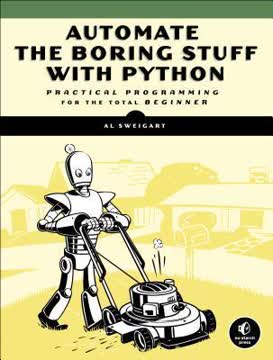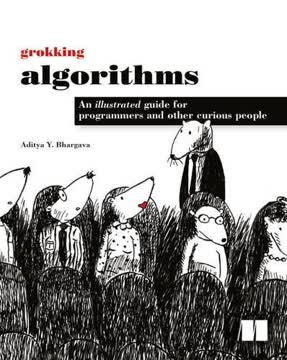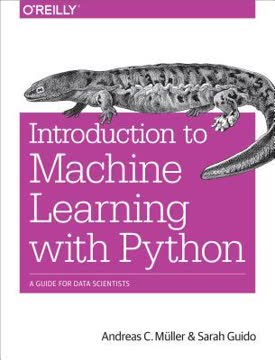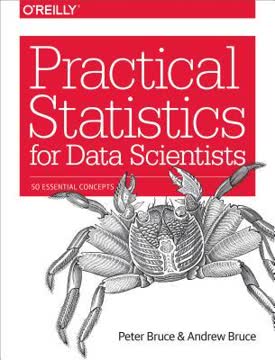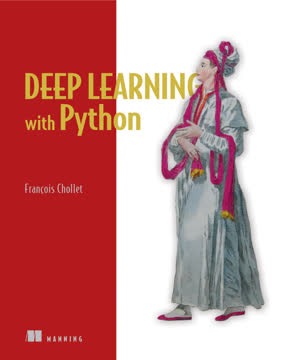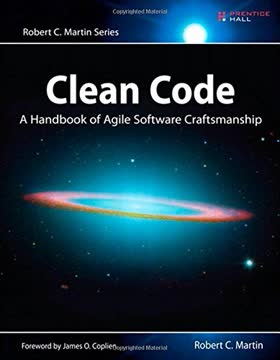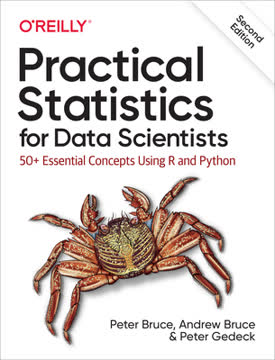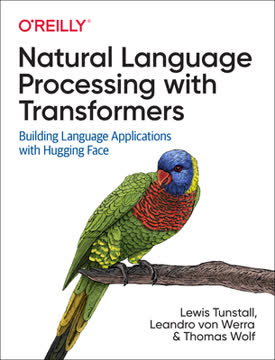मुख्य निष्कर्ष
1. डेटा साइंस के लिए पाइथन की बुनियादी बातें सीखें
पाइथन में कई ऐसी विशेषताएं हैं जो इसे डेटा साइंस सीखने और करने के लिए उपयुक्त बनाती हैं।
पाइथन के आवश्यक तत्व। पाइथन की सरलता और व्यापक लाइब्रेरी इकोसिस्टम इसे डेटा साइंस के लिए आदर्श भाषा बनाते हैं। इसमें मुख्य अवधारणाएं हैं डेटा संरचनाएं (लिस्ट, डिक्शनरी, सेट), नियंत्रण प्रवाह (if स्टेटमेंट, लूप्स) और फंक्शन्स। भाषा की पठनीयता और उपयोग में आसानी डेटा वैज्ञानिकों को जटिल सिंटैक्स की बजाय समस्या समाधान पर ध्यान केंद्रित करने देती है।
डेटा मैनिपुलेशन लाइब्रेरी। NumPy जैसे संख्यात्मक गणना के लिए और pandas जैसे डेटा मैनिपुलेशन के लिए आवश्यक लाइब्रेरी से परिचित हों। ये उपकरण बड़े डेटासेट के साथ काम करने के लिए कुशल डेटा संरचनाएं और ऑपरेशन प्रदान करते हैं। सीखें कि कैसे:
- विभिन्न फॉर्मेट में डेटा लोड और सेव करें
- डेटा को साफ़ और पूर्व-प्रसंस्कृत करें
- बुनियादी सांख्यिकीय ऑपरेशन करें
- डेटासेट को पुनः आकार दें और मर्ज करें
विज़ुअलाइज़ेशन टूल। Matplotlib और Seaborn जैसी डेटा विज़ुअलाइज़ेशन लाइब्रेरी में महारत हासिल करें ताकि सूचनात्मक और आकर्षक ग्राफ़ बनाए जा सकें। समझें कि कैसे:
- बुनियादी प्लॉट बनाएं (लाइन, स्कैटर, बार)
- प्लॉट की सुंदरता को अनुकूलित करें
- सबप्लॉट और मल्टी-पैनल आकृतियाँ बनाएं
- उच्च-आयामी डेटा को विज़ुअलाइज़ करें
2. मुख्य सांख्यिकीय अवधारणाओं को समझें और लागू करें
सांख्यिकी महत्वपूर्ण है। (या शायद सांख्यिकीय आंकड़े महत्वपूर्ण हैं?)
वर्णनात्मक सांख्यिकी। केंद्रीय प्रवृत्ति के माप (माध्य, माध्यिका, बहुलक) और प्रसरण (वैरिएंस, मानक विचलन) का उपयोग करके डेटा को संक्षेपित और वर्णित करना सीखें। डेटा वितरण का महत्व समझें और इसे हिस्टोग्राम और बॉक्स प्लॉट के माध्यम से कैसे दर्शाया जाता है, जानें।
अनुमानात्मक सांख्यिकी। सांख्यिकीय अनुमान के मुख्य सिद्धांतों में महारत हासिल करें:
- प्रायिकता वितरण (नॉर्मल, बाइनोमियल, पोइसन)
- परिकल्पना परीक्षण और p-मूल्य
- विश्वास अंतराल
- प्रतिगमन विश्लेषण
सांख्यिकीय गलतियाँ। सामान्य सांख्यिकीय त्रुटियों और गलत व्याख्याओं से सावधान रहें:
- सहसंबंध बनाम कारणता
- सिम्पसन का विरोधाभास
- सर्वाइवरशिप बायस
- बहु-तुलना समस्या
3. डेटा मैनिपुलेशन और विश्लेषण के लिए रैखिक बीजगणित का उपयोग करें
रैखिक बीजगणित गणित की वह शाखा है जो वेक्टर स्थानों से संबंधित है।
वेक्टर और मैट्रिक्स ऑपरेशन। रैखिक बीजगणित की मूल अवधारणाओं और उनके डेटा साइंस में अनुप्रयोगों को समझें:
- वेक्टर जोड़ और स्केलर गुणा
- मैट्रिक्स गुणा और ट्रांसपोज़िशन
- ईजेनवेक्टर और ईजेनवैल्यू
- सिंगुलर वैल्यू डीकंपोज़िशन (SVD)
डेटा साइंस में अनुप्रयोग। विभिन्न डेटा साइंस समस्याओं को हल करने के लिए रैखिक बीजगणित तकनीकों को लागू करें:
- आयाम में कमी (जैसे प्रिंसिपल कंपोनेंट एनालिसिस)
- फीचर निष्कर्षण और रूपांतरण
- रैखिक समीकरणों के सिस्टम को हल करना
- मशीन लर्निंग एल्गोरिदम लागू करना (जैसे रैखिक प्रतिगमन, न्यूरल नेटवर्क)
4. मशीन लर्निंग एल्गोरिदम को खुद से लागू करें
मशीन लर्निंग आजकल बहुत लोकप्रिय है, और इस अध्याय में हमने इसकी सतह को ही छुआ है।
सुपरवाइज्ड लर्निंग। मूल सुपरवाइज्ड लर्निंग एल्गोरिदम को समझें और लागू करें:
- रैखिक प्रतिगमन
- लॉजिस्टिक प्रतिगमन
- निर्णय वृक्ष
- K-निकटतम पड़ोसी
- सपोर्ट वेक्टर मशीन (SVM)
अनसुपरवाइज्ड लर्निंग। डेटा में पैटर्न खोजने के लिए अनसुपरवाइज्ड लर्निंग तकनीकों का अन्वेषण करें:
- K-मीन्स क्लस्टरिंग
- पदानुक्रमिक क्लस्टरिंग
- प्रिंसिपल कंपोनेंट एनालिसिस (PCA)
- गॉसियन मिक्सचर मॉडल
मॉडल मूल्यांकन। मॉडल के प्रदर्शन का आकलन और सुधार करने की तकनीकें सीखें:
- क्रॉस-वैलिडेशन
- रेगुलराइजेशन
- फीचर चयन और इंजीनियरिंग
- हाइपरपैरामीटर ट्यूनिंग
5. न्यूरल नेटवर्क और डीप लर्निंग में उन्नत तकनीकों का अन्वेषण करें
डीप लर्निंग मूलतः "डीप" न्यूरल नेटवर्क (अर्थात् एक से अधिक छुपी हुई परतों वाले नेटवर्क) के उपयोग को कहते थे, हालांकि अब यह शब्द विभिन्न न्यूरल आर्किटेक्चर को समाहित करता है।
न्यूरल नेटवर्क की बुनियादी बातें। न्यूरल नेटवर्क के मूलभूत घटकों को समझें:
- न्यूरॉन्स और सक्रियण कार्य
- फीडफॉरवर्ड और बैकप्रोपेगेशन
- ग्रेडिएंट डिसेंट और अनुकूलन एल्गोरिदम
डीप लर्निंग आर्किटेक्चर। विभिन्न डीप लर्निंग मॉडल और उनके अनुप्रयोगों का अन्वेषण करें:
- छवि प्रसंस्करण के लिए कन्वोल्यूशनल न्यूरल नेटवर्क (CNN)
- अनुक्रम डेटा के लिए रिकरेंट न्यूरल नेटवर्क (RNN)
- लॉन्ग शॉर्ट-टर्म मेमोरी (LSTM) नेटवर्क
- जनरेटिव एडवर्सेरियल नेटवर्क (GAN)
डीप लर्निंग फ्रेमवर्क। लोकप्रिय डीप लर्निंग लाइब्रेरी से परिचित हों:
- TensorFlow
- PyTorch
- Keras
6. टेक्स्ट विश्लेषण के लिए प्राकृतिक भाषा प्रसंस्करण का उपयोग करें
प्राकृतिक भाषा प्रसंस्करण (NLP) भाषा से संबंधित कम्प्यूटेशनल तकनीकों को कहते हैं।
टेक्स्ट पूर्व-प्रसंस्करण। टेक्स्ट डेटा तैयार करने की आवश्यक तकनीकें सीखें:
- टोकनाइजेशन
- स्टेमिंग और लेमाटाइजेशन
- स्टॉप वर्ड हटाना
- पार्ट-ऑफ-स्पीच टैगिंग
फीचर निष्कर्षण। टेक्स्ट को संख्यात्मक फीचर्स में बदलने के तरीके समझें:
- बैग-ऑफ-वर्ड्स प्रतिनिधित्व
- TF-IDF (टर्म फ्रिक्वेंसी-इनवर्स डॉक्यूमेंट फ्रिक्वेंसी)
- वर्ड एम्बेडिंग्स (जैसे Word2Vec, GloVe)
NLP अनुप्रयोग। सामान्य NLP कार्य और तकनीकों का अन्वेषण करें:
- भावना विश्लेषण
- नामित इकाई मान्यता (NER)
- विषय मॉडलिंग
- मशीन अनुवाद
- प्रश्न उत्तर प्रणाली
7. वास्तविक दुनिया की समस्याओं पर डेटा साइंस तकनीकों को लागू करें
पुस्तक में हम विभिन्न मॉडल परिवारों की जांच करेंगे जिन्हें हम डेटा से सीख सकते हैं।
समस्या का स्वरूप निर्धारण। व्यावसायिक समस्याओं को डेटा साइंस कार्यों में अनुवाद करना सीखें:
- प्रमुख हितधारकों और उनकी आवश्यकताओं की पहचान करें
- स्पष्ट उद्देश्य और सफलता मापदंड निर्धारित करें
- उपयुक्त डेटा स्रोत और संग्रह विधियाँ तय करें
डेटा पाइपलाइन विकास। वास्तविक दुनिया के अनुप्रयोगों के लिए मजबूत डेटा पाइपलाइन बनाएं:
- डेटा संग्रह और भंडारण
- डेटा सफाई और पूर्व-प्रसंस्करण
- फीचर इंजीनियरिंग और चयन
- मॉडल प्रशिक्षण और मूल्यांकन
- तैनाती और निगरानी
नैतिक विचार। डेटा साइंस के नैतिक पहलुओं को समझें:
- डेटा गोपनीयता और सुरक्षा
- मशीन लर्निंग मॉडलों में पक्षपात और निष्पक्षता
- एल्गोरिदम की पारदर्शिता और व्याख्यात्मकता
- जिम्मेदार AI विकास और तैनाती
अंतिम अपडेट:
FAQ
What's Data Science from Scratch by Joel Grus about?
- Focus on Fundamentals: The book emphasizes understanding data science concepts from the ground up, using Python. It covers essential topics like statistics, linear algebra, and machine learning.
- Hands-On Approach: Readers are encouraged to implement data science techniques themselves, fostering a deeper appreciation for the underlying principles.
- Real-World Applications: Practical examples and real datasets are used to illustrate concepts, making the material relatable and applicable to real-world problems.
Why should I read Data Science from Scratch by Joel Grus?
- Comprehensive Learning: Ideal for beginners, the book provides a solid foundation in data science without requiring prior knowledge.
- Python-Centric: It introduces Python programming alongside data science concepts, offering a dual learning experience.
- Updated Content: The second edition includes new material on deep learning, statistics, and natural language processing, reflecting the latest trends.
What are the key takeaways of Data Science from Scratch by Joel Grus?
- Understanding Data Science: Defines data science as the intersection of hacking skills, math and statistics knowledge, and substantive expertise.
- Building from Scratch: Emphasizes the importance of building algorithms from scratch to demystify complex concepts.
- Importance of Clean Code: Stresses writing clean, maintainable code, essential for effective data science work.
What is the Bias-Variance Tradeoff in Data Science from Scratch by Joel Grus?
- Model Complexity: Describes the balance between minimizing bias and variance, crucial for building effective models.
- Overfitting vs. Underfitting: Explains how high bias may lead to underfitting, while high variance may cause overfitting.
- Practical Implications: Suggests adding features to reduce bias and simplifying models to reduce variance.
How does Data Science from Scratch by Joel Grus define Data Science?
- Definition: Describes data science as "the sexiest job of the 21st century," emphasizing its growing importance.
- Core Skills: Highlights the intersection of hacking skills, math and statistics knowledge, and substantive expertise.
- Real-World Examples: Provides examples of data science applications, such as predicting customer behavior.
What is the Central Limit Theorem as explained in Data Science from Scratch by Joel Grus?
- Definition: States that the distribution of the sample mean approaches a normal distribution as the sample size increases.
- Implications for Data Science: Allows inferences about population parameters based on sample statistics.
- Practical Application: Illustrates the theorem with examples, showing its role in statistical methods like regression analysis.
What is Gradient Descent in Data Science from Scratch by Joel Grus?
- Optimization Technique: An algorithm used to minimize model error by iteratively adjusting parameters.
- Learning Rate: Requires a learning rate to determine step size towards the minimum, crucial for convergence.
- Applications: Used in various models, including linear regression and neural networks.
How does Data Science from Scratch by Joel Grus explain Naive Bayes?
- Spam Classification: Uses Naive Bayes as an example of a simple yet effective classification technique.
- Independence Assumption: Assumes feature independence given the class label, simplifying probability computation.
- Implementation: Provides a step-by-step guide to implementing a Naive Bayes classifier.
What is the significance of R-squared in Data Science from Scratch by Joel Grus?
- Goodness of Fit: Indicates how well independent variables explain the variability of the dependent variable.
- Limitations: Can be misleading, especially in models with many predictors, as it doesn't account for model complexity.
- Practical Use: Emphasizes using R-squared alongside other metrics for comprehensive model performance assessment.
What is the importance of linear regression in Data Science from Scratch by Joel Grus?
- Foundational Technique: A simple and widely used statistical technique, serving as a building block for complex models.
- Predictive Modeling: Used for predictive modeling, allowing informed decisions based on data.
- Implementation from Scratch: Provides a detailed explanation of implementing linear regression in Python.
How does Data Science from Scratch by Joel Grus approach data visualization?
- Importance of Visualization: Emphasizes that effective visualization is crucial for understanding and communicating insights.
- Matplotlib Library: Introduces Matplotlib for creating visualizations in Python, aiding in data presentation.
- Examples and Best Practices: Offers examples of good and bad visualizations, teaching clear and informative graphic creation.
How does Data Science from Scratch by Joel Grus address data ethics?
- Importance of Ethics: Discusses the ethical implications of data science, emphasizing responsibility in considering the impact of work.
- Real-World Examples: Provides examples of data misuse and ethical dilemmas, illustrating the importance of ethical considerations.
- Encouraging Thoughtful Discussion: Encourages readers to engage in discussions about data ethics and think critically about their work.
समीक्षाएं
डेटा साइंस फ्रॉम स्क्रैच को मिली-जुली प्रतिक्रियाएँ मिली हैं। कई पाठक इसकी व्यावहारिक दृष्टिकोण और शुरुआती लोगों के लिए दिए गए हाथों-हाथ उदाहरणों की सराहना करते हैं, साथ ही लेखक की स्पष्ट व्याख्याओं और आकर्षक लेखन शैली को भी पसंद करते हैं। किताब का मुख्य फोकस एल्गोरिदम को बिलकुल शुरुआत से बनाना है, जिसे मूल बातें समझने के लिए लाभकारी माना जाता है। हालांकि, कुछ समीक्षक इसे अनुभवी पेशेवरों के लिए बहुत ही बुनियादी या गहराई से समझाने में कमी महसूस करते हैं। पाठक किताब में शामिल विषयों की व्यापकता की प्रशंसा करते हैं, लेकिन यह भी बताते हैं कि कोड के उदाहरण वास्तविक दुनिया के अनुप्रयोगों के लिए हमेशा व्यावहारिक नहीं हो सकते। कुल मिलाकर, यह उन लोगों के लिए अनुशंसित है जो डेटा साइंस में नए हैं और एक व्यावहारिक परिचय की तलाश में हैं।
Similar Books
